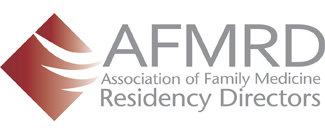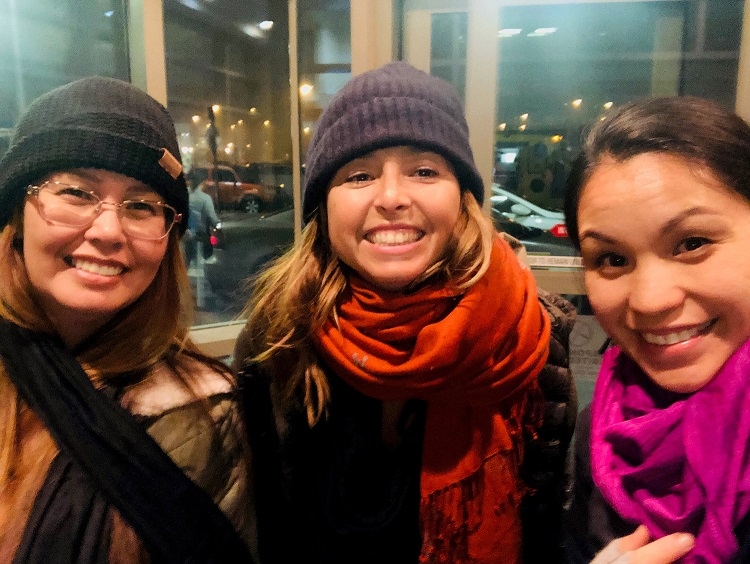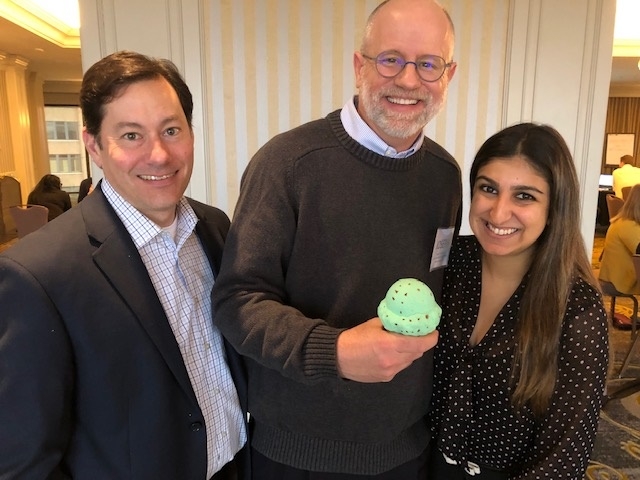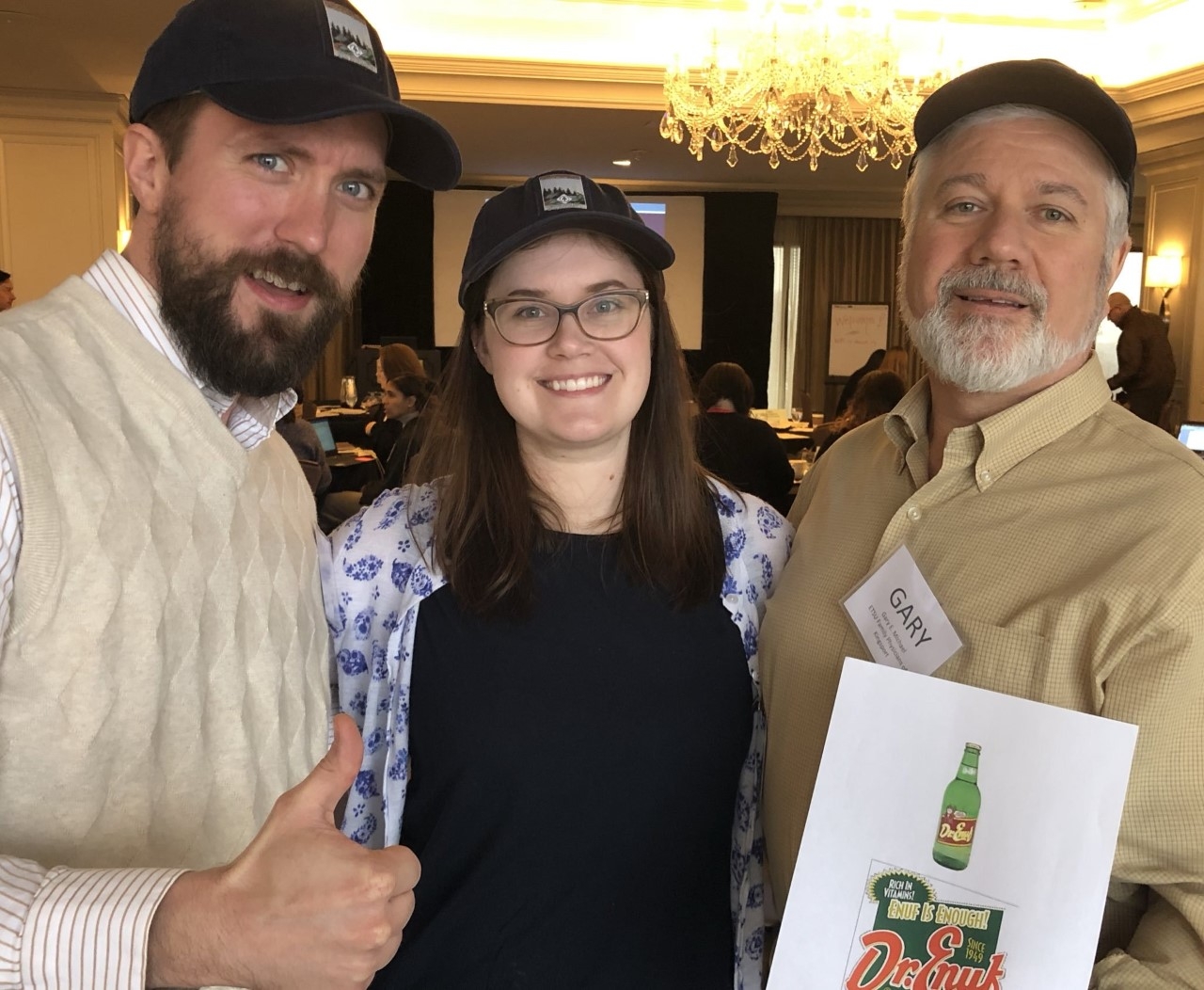Franciscan Health Family Medicine Residency Program applied for the collaborative to gain insight into overcoming some of the challenges we experience particularly in our outpatient clinic. However, we nearly failed miserably at our first task to simply bring a “token” that represented our program. We are a community based program in Indianapolis (racing capitol of the world), and we forgot to bring a hot wheels race care as our memento. So, at 9 pm on the eve of our first meeting, we bought a Legos race car from Walmart with a team member pulling an all-nighter to construct our prized token.
We found the collaborative to be enlightening while at the same time reassuring. Admittedly, we were a bit apprehensive fearing that our program would be the laughing stock of the entire group because we had not overcome certain challenges. But after mingling and hearing similar concerns from programs across the country, we unashamedly patted ourselves on the back realizing that we were not alone in our struggle to combine high quality residency training while developing an efficient ambulatory clinic.
An unforeseen benefit of the collaborative was the time. This plain, simple, precious commodity where several faculty and our chief resident could sit, listen, take notes and then convene later to discuss, without any interruptions, our most concerning hurdles. Like other community based programs, we have a small group of full time faculty that rarely gets the opportunity to sit together and focus on one unified task over an extended period of time.
Several areas of concern we wanted to work on:
- Team care – we had implemented team care but wanted to utilize this to a deeper level. From the collaborative, we were introduced to the co-location concept which models how most ambulatory physicians practice in their clinics. By happenstance, we are planning an expansion and renovation to our clinic, so carving out specific areas where smaller groups of MAs and providers can work side by side should be theoretically possible. With the co-location model, we hope to improve communication and efficiency via the “daily huddling” that would naturally occur.
- Population health:
- Unfortunately, a common theme throughout the collaborative was the desperate need for more MAs and the appalling universal resistance from administration to understand the unique needs of residency clinics. This is an area we greatly struggle, mainly due to the lack of dedicated time and personnel to accommodate this task. We are hoping by improving our efficiency with higher utilization of team care and co-locating, we may free up some MA time to focus on this area.
- We are also in negotiations with several local universities to develop a relationship with their Masters of Public Health (MPH) programs. Our vision is to develop an internship that focuses on population health initiatives. We see this as an ongoing, longitudinal rotation where the students compile useful and accurate reports from our EMR system (EPIC) and then strategize using best practice models to solve our healthcare quality gaps. Going forward, this would be an area ripe with possible QI projects.
- Capturing meaningful data:
- As we heard echoed throughout programs across the country, this continues to be a major hurdle for our program. Our institution, like many others of similar scope and size, currently looks at quality metrics more with a retrospective rather than a prospective lens, likely due to current reimbursement models. We have the ability to run reports, but the data is often questionable and the amount of time needed to align the specifics makes them incredibly cumbersome to consider using for meaningful QI projects
- We are again hopeful that the MPH students involved in the internship (described above) will create accurate and relevant reports that we can utilize with confidence.
- Pre-visit planning - Our plan is to start with “well adult visits” where the MA, with their new found "extra” time, would call the patient several days prior to their appointment to reconcile medications, hunt down lab work or imaging studies and pre-order any necessary screening tests and vaccines. This has been shown to greatly reduce rooming time thereby significantly increasing clinic efficiency.
- Hospital discharge follow-up - We did not have a defined work flow to accommodate appropriate clinic follow-up appointments for our discharged hospital patients. After hearing how a similar program overcame this hurdle at the collaborative, we now reserve one afternoon clinic each week for the inpatient team (upper and lower level resident) to solely schedule recently discharged patients. This was a practical solution that was easily transitioned into our scheduling algorithm and well received from both our patients and our residents.
High quality residency training and efficient ambulatory clinics don’t have to be mutually exclusive as our patients and residents deserve the very best we can offer. The accrediting institutions are well versed and created to confirm that programs comply with the necessary training requirements. However, there really are no institutional guidelines for academic clinics on how to develop and maintain an efficient outpatient clinic. And this is understandable given the incredibly diverse settings that encompass all of the teaching clinics and where they’re embedded.
In order to change the mindset of “this is just how residency clinics run” there needs to be a dialogue on just how to do it. The Clinic First Collaborative was that forum where data was presented and discussed which gave the attendees the freedom to envision how best to overcome common challenges with beneficial outcomes for the patients and providers. We found the collaborative experience to be extremely valuable to our program. As stated above, we are implementing several ideas that we gleaned from other programs. We found the meeting in Kansas City where all the programs came together to be the most insightful as we were able to interact and discuss common hurdles with many programs in a short period of time. However, the webinars and email listserv were a great way to continue the ongoing dialogue and hear feedback on current progress (or lack of) with certain obstacles.
We greatly appreciate the tremendous amount of energy and work that went in to developing this initiative from the Clinic First Collaborative team. We hope this initiative will continue to grow as we strive to continuously improve the ambulatory experience for our patients and our residents. We send a huge “Thank You” to the Clinic First Team!!




